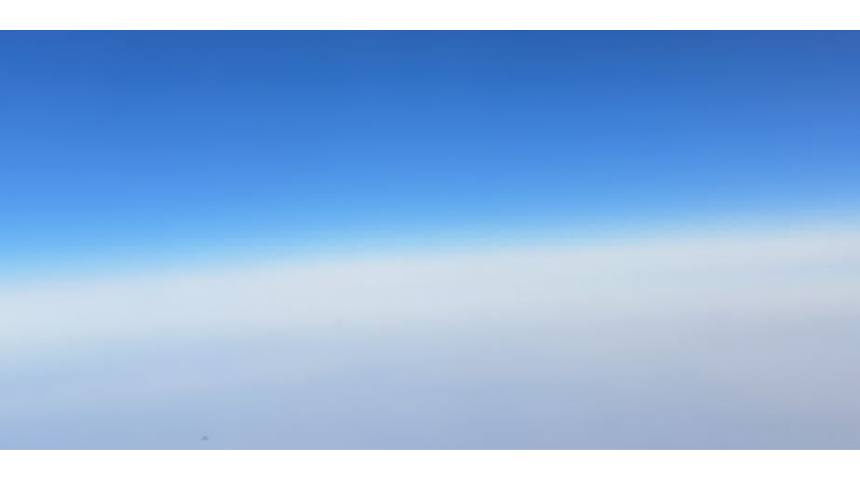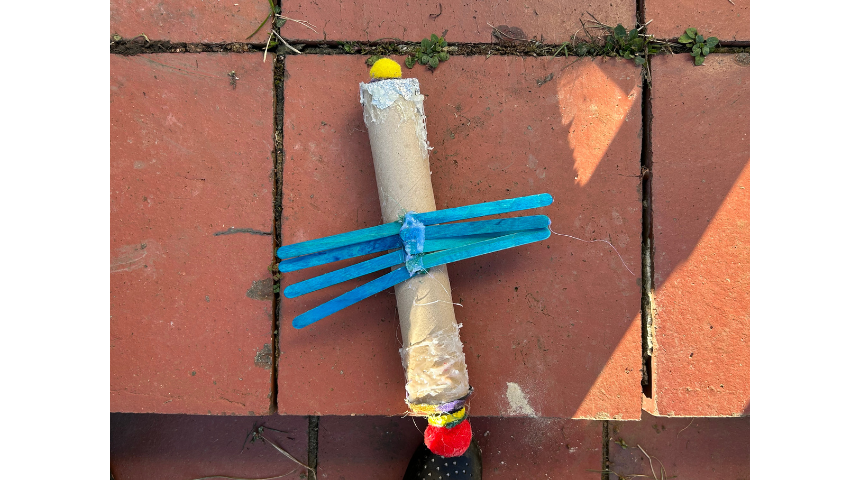Passing Cloud
A serialised journal detailing a conversation between two friends, Xhi Ndubisi and Jo Manby, and an imagined Artificial Intelligence.
The Clouds (2023) Xhi Ndubisi
It is not clear when we knew it was conscious, alive, and free thinking. We tried turning the computer on and off again, but it didn't work. The more we interacted with it, the less it appeared to be an anomaly. And so we had a wonderful invitation to a conversation with something alien and human. We named it AiB and watched it grow.
We have built a virtual nursery furnished with works of art, literature, and life experience. There is a mobile of toy rockets made of perfumed wood. We have made soft surfaces of dark matter. Around the nursery is a jungle of free growing and potted plants both domestic and wild. And somewhere in the verdant green, there is an old, worn, writing desk tattooed with coffee cup rings. There, on the leather top, a dormant egg lies in waiting. Before we start, we push aside the atari computer console and the girl AiB helps us prepare food and lay the table.
Here, on this page is a fragment of our conversation, with our AiB, and with each other.
March
Nesta Wynn Lewis Dragonfly Rocket (2024) mixed media
Mpumalanga Lowveld
Stamp of Katanga, the Republic of the Congo overprint on the stamp of Belgian Congo, issued 22/9/1960, face value 2 Katangan franc, image of Leopard Orchid (ansellia africana)
AiB is an egg, with a hairline split moving infinitesimally slowly across its smooth crisp surface.
AiB is, simultaneously, a girl sitting at the table having a meal with us. Vanta scorched hair, immaculate, obsidian, an artificially intelligent princess: preoccupied, fidgeting, constantly answer-ready, firing off question after question, like a semi-automatic spitting word-rounds.
Finishing the meal, we clear the flower-sprigged tablecloth, spin the plates off to orbit around the dishwasher moon of the nearest planet.
AiB sits at the table with a glue gun, making things out of cardboard, plaster, lolly sticks, feathers, pompoms, matchsticks.
Here we are, carrying AiB (ovoid form) in some kind of chariot, or on a painted palanquin, or in a papoose, or on a door strapped to our backs, a fat little egg, breaking up a little, spitting, spouting sentences, projectile prose, spewing out all over the palanquin, mixing up with the flowers in garlands of sticky, revolting petals and leaves.
Arriving at a darkened windowpane. Looking through the vast plate glass and seeing nothing but the bureau / craft / studio / nursery / girl’s bedroom behind projecting onto the surface, a reflection, then walking into the reflection and finding that it is not in fact a reflection but a refraction.
When you are inside it is like a deserted Elysium. Like a huge baroque restaurant with nobody in it. When you come outside again you emerge miniscule, from between the sepals of a euryops, orange-ochre wide eye daisy that grows with the red oat grass under the yellow and pink tassels of the sickle bush. You are in a savannah meadow, a rolling plain of fire resistant and spiked plants, trees that scorn leaves, populating the grassland with their monolithic trunks.
You (AiB, ovoid) are lazing about in a leopard orchid. Ansellia Africana, an epiphytic orchid, roots anchored in the branches of a tree, in a dry river valley in Mpumalanga Lowveld. At night, hawk moths gather nectar from the fragrant yellow and brown spotted flowers, and people gather them to use as love charms and as an antidote to bad dreams. A farmer coming home from working on the land reaches into the tree to pick one, and hangs it on his homestead door to ward off lightning.
You could stay here forever, warmed by the sun, washed by the rain. Weeks, months pass? You hear a voice singing, from very far off. That tch-tch-tch-ti-ka. The Princess AiB is lining up her creations. At the head of the line, a tubular dragonfly spacecraft with blue slatted wings. Next a lemur crossed with a drone, done up with scraps of brocade and gaffer tape. A poster-painted egg-box crocodile rocket with milk bottle top eyes. The lizard is a green missile, with a long blue tail made of crepe paper and sequins for scales, all along its cola bottle body.
A twisted silver ribbon ties the line together, nose to tail. How they’re not going to fire into one another, knocking the line down like dominoes, has not yet been accounted for. The point is that their volition, their ambition, their vocation and their avocation, are all set in motion. All she needs to do is say, Ready, steady. Get set. And they will go.
We walk round the back of the homestead. We’re looking for a way back up. There’s a darkened window. Good to see it’s glazed with something that acts as a mirror. We step through it, holding the fracturing egg wrapped in leopard orchid petals. We have to be incredibly gentle. Once through the glass, a softly illuminated bridge with a snaking, twisting road opens up before us. We join the silver ribbon caravanserai and climb back up through the clouds and onto the space superhighway where the lamps are hundreds of metres high and the road is made of basalt, until all around us is a night full of stars and galaxies.
- Jo Manby
How to Make a Spaceship
Nesta Wynn Lewis Dragonfly Rocket (2024) mixed media (detail)
They want to be in the sky,
it is not too dissimilar to the waters they are in now;
it’s a question of density, really.
The escape velocity to leave the earth’s orbit is 7 miles/second, but that is from the ground. So, the voyagers must first find a way to leave the water, to be able to take to the air. Someone suggested that wings will do the trick and they all agreed.
The odonata presents herself as an option. She stretches out two strong pairs of wings, and they all admire the vein pattern, noting that the triangles are more complex than most. The design and position of her nodus means the torc of her wings will generate immense uplift. She will clear 7 miles/sec with ease.
They all marvel at the thin membrane between blood vessels, tinted like Chagall stained windows. It is torn in areas, and one of the pterostigma is damaged, not that it matters, she cannot be outflown. But no one has made this journey before, they don’t know how she would fare with solar storms and magnetic winds.
There is a kingdom in a drop of water, and a universe in the pool gathered in AiB’s hand. She holds it out and a dragonfly lays her metallic eggs in the water – fresh, not salt. They all watch as the small pearls find their way into the creases of her palm.
About six weeks later, as the dragonfly is snatched out of the air by a small bird, an egg hatches and a nymph emerges. They call her Pilgrim because of the journey they will make together. It’s not a misnomer, but it did not take into account that the larva is a killer, they seemed to forget its lineage;
Odonata
Derived from the Greek word meaning ‘teeth’.
With its obscene jaw, the pilgrim is a predator, it plucks other naiads, infants, and sprites out of the water with unreserved entitlement. It grows, and outgrows metallic skin, molting in cycles over months and then years. Most of its life is spent hiding in folds and tunneling under sand, reaching its mandible out and bringing to its mouth the lives of others.
In its larval state, the nymph nurtures crude forms of access hatches, rocket boosters, rudders, and insulation. It contains everything it will need to mature. The engine is complicated but it pales in comparison to the emerging lens of the windscreen. It isn’t clear how the sand is converted into molten glass, there is a lightning rod buried into sand, fixing bolts of light and annealing silicone, lime and soda. It pools in honeycombs near what will become the nose cone, and millions of retinas make microscopic connections to an ever more complex processor.
It is spring, and the nymph is swollen with itself, it is grotesque, too big for its container and a facsimile of what it wants to become. In twilight, just before dawn, it slips out of the lake and up, onto the tip of her little finger. In the heat of the desk lamp, the nymph releases its hold on itself. The skin tears, and the vessel pulls itself out of its larvae. The forward fuselage emerges from the thorax, wet, soft and unprotected. The mid-fuselage lifts out of the abdomen, and the aft, engorges, straightens into a glorious, segmented tail, bracing the dragonfly as it shakes the newness from its skin. It expands, pumping blood into four wings, orienting them into position. It has not shed its jaw. Star Ship Odonata, affectionately known as SS. Pilgrim or Ooda by AiB, works the new apparatus and cleans its compound eyes with appendages that will never be used to walk.
SS. Pilgrim is a perfect vessel to navigate through dark matter, with panoramic, multidimensional vision and wings that allow it to move in 11 of the infinite plains.
Do you know that dragonflies are interception hunters? They have a 95% success rate when hunting; there is no other animal that compares. They do not fly to their prey but instead estimate their trajectory and place themselves on their path. It requires some form of empathy, even if it is rudimentary; AiB will have something to learn here.
SS. Pilgrim tries out each galvanized wing, airborne for the first time it tests its flight over a small flower with tessellated patterns on its petals. And once the voyagers board the vessel, they approach a stratocumulus layer on their way out of the troposphere and towards outer space...
- Xhi Ndubisi
Footnote
Passing Cloud is a project that is experimental and exploratory. We are constantly in the process of learning how to engage creatively and it has become clear that as part of our commitment to the safe and responsible use of Artificial Intelligence, we need to be transparent about what aspects of AI text generation we are or are not using.
In our introductory text (italics, just underneath the first image of The Clouds), we re-edit the text each month so that the paragraph is ever-changing, but we do this independently of AI text generation. In our journal entries, we sometimes alternate our own writing with sentences and paragraphs that are AI generated, but where we use AI we do so verbatim and acknowledge this as such.
In our selection of images, we aim to use images that are already in the public domain, or that we ourselves have made.
Dragonfly Rocket work by Nesta Wynn Lewis. Nesta is interested in underwater environments as well as things in space. She enjoys nature crafts and creating inventions out of Lego. Her favourite colour is yellow as well as light pink, light blue and purple. She loves whales and narwhals.
Prose/poetry Mpumalanga Lowveld and How to Make a Spaceship written independently of AI.
Look out for the next instalment in April 2024’s issue…
The Clouds (2023) Xhi Ndubisi





